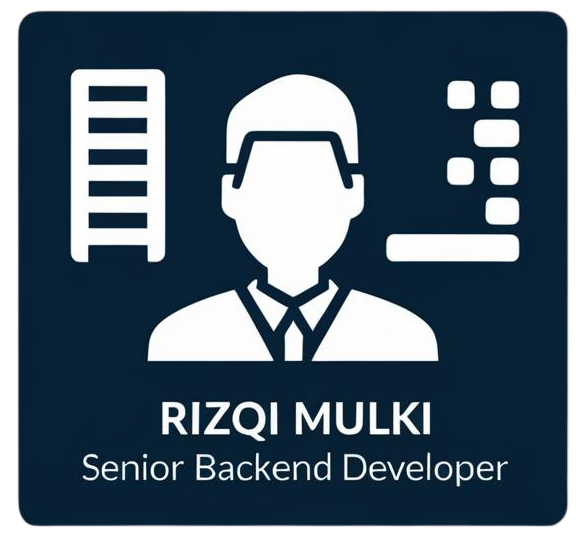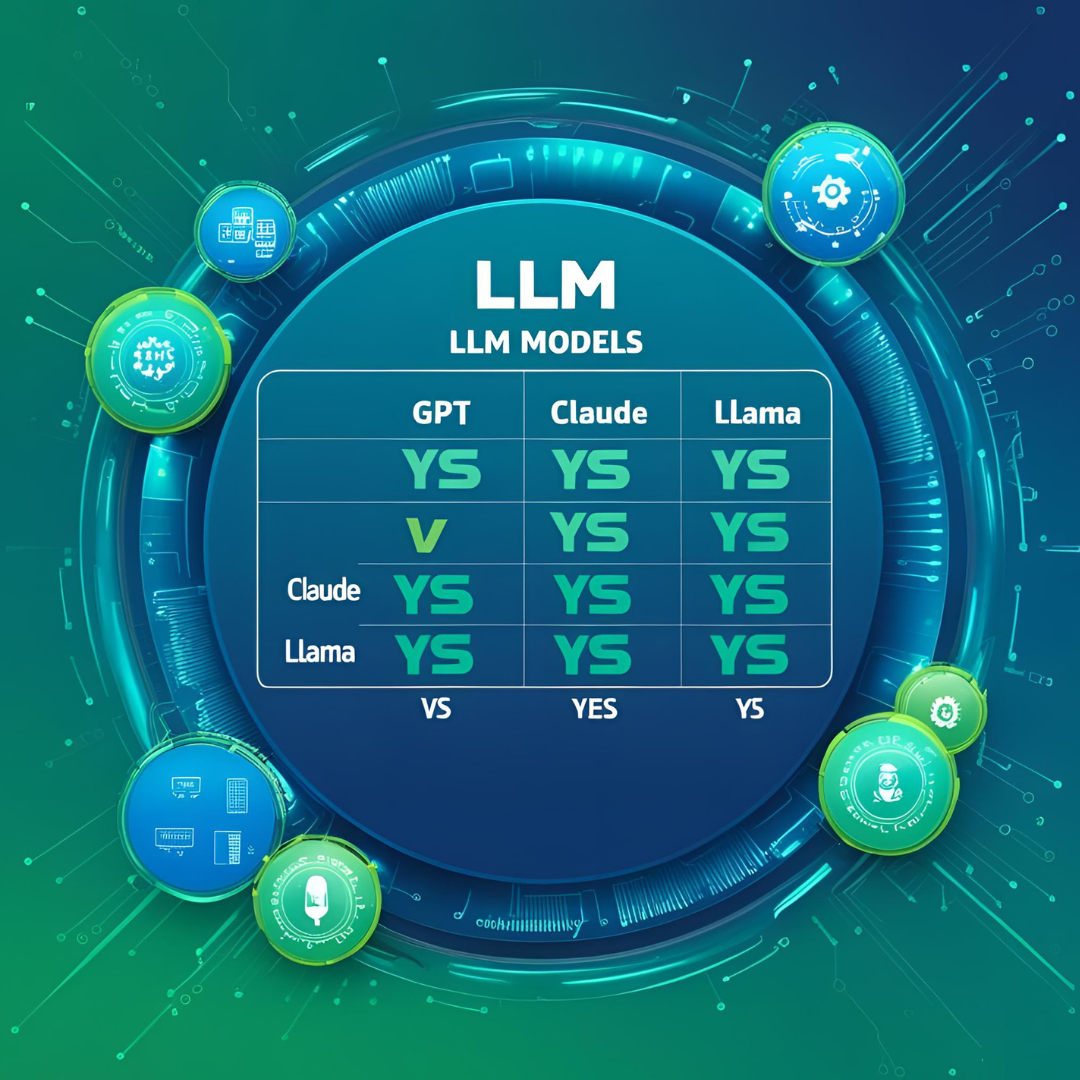The landscape of Large Language Models has exploded in recent years, with numerous powerful models emerging from different organizations, each with unique strengths, capabilities, and design philosophies. From OpenAI’s groundbreaking GPT series to Meta’s open-source Llama models, from Anthropic’s safety-focused Claude to Google’s multimodal Gemini, the diversity of available LLMs can be overwhelming.
Understanding the key differences between these models is crucial for developers, researchers, and businesses looking to leverage AI capabilities. Each model family has been designed with different priorities, training methodologies, and use cases in mind. This comprehensive comparison will help you navigate the current LLM landscape and choose the right model for your specific needs.
The GPT Family: OpenAI’s Pioneering Series
OpenAI’s Generative Pre-trained Transformer (GPT) series has been instrumental in bringing large language models to mainstream attention and establishing many of the paradigms we see today.
GPT-4 and GPT-4 Turbo
Architecture: Decoder-only transformer with an estimated 1.7 trillion parameters across a mixture-of-experts architecture, though exact details remain proprietary.
Key Strengths:
- Exceptional reasoning capabilities and complex problem-solving
- Strong performance across diverse tasks from creative writing to code generation
- Advanced multimodal capabilities (text and vision)
- Excellent instruction following and conversational abilities
- Superior performance on standardized benchmarks
Notable Features:
- Function calling and tool use capabilities
- Code interpreter for data analysis and visualization
- Vision capabilities for image understanding and analysis
- Customizable through fine-tuning (though limited public access)
Use Cases: GPT-4 excels at complex reasoning tasks, technical writing, code generation, creative projects, and applications requiring high-quality outputs where cost is less of a concern.
GPT-3.5 Turbo
Architecture: Smaller and more efficient than GPT-4, optimized for speed and cost-effectiveness.
Key Strengths:
- Excellent balance of capability and efficiency
- Fast response times and lower costs
- Strong general-purpose performance
- Good for most common language tasks
Limitations:
- Less capable than GPT-4 for complex reasoning
- No native multimodal capabilities
- May struggle with highly specialized or nuanced tasks
Claude: Anthropic’s Safety-First Approach
Anthropic’s Claude models represent a distinctive approach to LLM development, prioritizing safety, helpfulness, and harmlessness through Constitutional AI training methods.
Claude 3 (Opus, Sonnet, Haiku)
Architecture: Transformer-based with emphasis on safety training and constitutional AI methods. Exact parameter counts are not publicly disclosed.
Claude 3 Opus (Flagship Model):
- Comparable to GPT-4 in reasoning capabilities
- Strong performance on complex tasks requiring nuanced understanding
- Excellent at creative writing and analysis
- Superior safety characteristics and reduced harmful outputs
Claude 3 Sonnet (Balanced Model):
- Optimized balance of capability and efficiency
- Good performance across most tasks
- Faster and more cost-effective than Opus
- Suitable for most production applications
Claude 3 Haiku (Speed-Optimized):
- Fastest response times in the Claude family
- Most cost-effective option
- Good for simple to moderate complexity tasks
- Ideal for high-volume applications
Unique Strengths:
- Advanced safety training reducing harmful outputs
- Excellent at following complex instructions and maintaining context
- Strong ethical reasoning capabilities
- Superior performance on reading comprehension and analysis tasks
- Honest about limitations and uncertainties
Use Cases: Claude models are particularly well-suited for applications requiring safety, ethical considerations, complex analysis, and detailed instruction following.
Llama: Meta’s Open Source Contribution
Meta’s Llama (Large Language Model Meta AI) series has democratized access to high-quality LLMs through open-source releases, enabling widespread research and development.
Llama 2
Architecture: Decoder-only transformer available in 7B, 13B, and 70B parameter versions.
Key Strengths:
- Open-source availability enabling customization and research
- Strong performance relative to model size
- Multiple size options for different computational budgets
- Extensive fine-tuning and specialization by the community
- Commercial use allowed under specific license terms
Notable Variants:
- Code Llama: Specialized for code generation and programming tasks
- Llama-Chat: Fine-tuned for conversational applications
- Numerous community fine-tunes for specific domains
Llama 3
Architecture: Improved architecture with enhanced training data and techniques, available in multiple sizes.
Improvements over Llama 2:
- Better instruction following capabilities
- Improved reasoning and mathematical abilities
- Enhanced multilingual performance
- Better safety characteristics
Community Impact: The open-source nature has led to an ecosystem of specialized models, research innovations, and democratized AI development.
Gemini: Google’s Multimodal Approach
Google’s Gemini represents a natively multimodal approach to large language models, designed from the ground up to handle text, images, audio, and video.
Gemini Ultra, Pro, and Nano
Architecture: Multimodal transformer architecture with native handling of multiple input types.
Gemini Ultra (Flagship):
- Competitive with GPT-4 on many benchmarks
- Advanced multimodal reasoning capabilities
- Strong performance on complex reasoning tasks
Gemini Pro:
- Balanced performance and efficiency
- Good multimodal capabilities
- Integrated with Google’s ecosystem
Gemini Nano:
- On-device deployment capabilities
- Optimized for mobile and edge applications
- Efficient while maintaining reasonable performance
Unique Strengths:
- Native multimodal understanding and reasoning
- Integration with Google’s extensive data and services
- Strong mathematical and scientific reasoning
- Efficient architecture for various deployment scenarios
Other Notable Models
PaLM and PaLM 2 (Google)
Google’s Pathways Language Model demonstrated scaling laws and achieved impressive performance across numerous tasks. PaLM 2, the successor, powers many of Google’s AI services and shows improvements in reasoning, coding, and multilingual capabilities.
Claude (Earlier Versions)
Earlier Claude models established Anthropic’s reputation for safety-focused AI, introducing concepts like Constitutional AI and harmlessness training that influenced the broader field.
GPT-3 and Earlier Models
The original GPT-3 was revolutionary in demonstrating few-shot learning capabilities and the power of scale. While superseded by newer models, it established many paradigms still used today.
Specialized Models
Codex/GitHub Copilot: OpenAI’s code-specialized model that revolutionized programming assistance.
InstructGPT: Demonstrated the power of human feedback in aligning language models with human preferences.
ChatGPT: The model that brought conversational AI to mainstream attention, based on GPT-3.5 with reinforcement learning from human feedback.
Comparative Analysis
Performance Benchmarks
Different models excel in different areas:
Complex Reasoning: GPT-4 and Claude 3 Opus typically lead in tasks requiring sophisticated reasoning and analysis.
Code Generation: GPT-4, Code Llama, and specialized coding models show strong performance.
Creative Writing: GPT-4 and Claude models excel at creative tasks with different stylistic strengths.
Efficiency: Smaller models like Claude 3 Haiku, Gemini Nano, and Llama 2 7B offer good performance per computational unit.
Multimodal Tasks: Gemini and GPT-4 with vision capabilities lead in handling multiple input types.
Safety and Alignment
Claude models generally lead in safety characteristics and reducing harmful outputs through Constitutional AI training.
GPT-4 incorporates safety measures but has been noted to be more permissive in certain contexts.
Llama models require additional safety fine-tuning for production deployment, though the community has developed various safety-enhanced versions.
Accessibility and Cost
Open Source: Llama models provide the most accessibility for research and customization.
Commercial APIs: GPT models offer robust API access with various pricing tiers.
Enterprise Solutions: Most major models offer enterprise-grade solutions with enhanced security and support.
Customization and Fine-tuning
Llama models offer the most flexibility for fine-tuning and customization due to their open-source nature.
GPT models provide limited fine-tuning options through OpenAI’s platform.
Claude and Gemini currently offer limited customization options, focusing on prompt engineering and few-shot learning.
Choosing the Right Model
For Research and Experimentation
Llama models provide the best starting point due to open-source availability and community support.
For Production Applications
GPT-4 offers the best overall performance for applications where quality is paramount.
Claude models excel when safety and ethical considerations are important.
Smaller models (GPT-3.5 Turbo, Claude 3 Sonnet/Haiku, Llama 2 7B/13B) provide good performance with better cost efficiency.
For Specialized Use Cases
Code Generation: GPT-4, Code Llama, or GitHub Copilot Creative Writing: GPT-4 or Claude models Multimodal Applications: Gemini or GPT-4 with vision On-Device Deployment: Gemini Nano or quantized Llama models High-Volume, Cost-Sensitive: Claude 3 Haiku or GPT-3.5 Turbo
Future Trends and Considerations
Model Convergence
Many models are converging on similar capabilities, with differentiation increasingly coming from:
- Training methodologies and safety approaches
- Specialized fine-tuning and domain expertise
- Deployment options and integration capabilities
- Cost and efficiency characteristics
Emerging Patterns
Multimodal Integration: More models are incorporating native multimodal capabilities.
Efficiency Focus: Increasing emphasis on achieving good performance with smaller, more efficient models.
Safety and Alignment: Growing attention to safety training and alignment with human values.
Specialization: Development of domain-specific models and fine-tunes for particular use cases.
Open Source vs. Closed Source
The tension between open-source accessibility and closed-source performance continues to shape the landscape. Open-source models like Llama enable innovation and customization, while closed-source models often lead in raw performance and safety.
Conclusion
The landscape of large language models is rich and diverse, with each major model family offering distinct advantages and trade-offs. GPT models lead in overall performance and versatility, Claude models excel in safety and complex analysis, Llama models provide open-source accessibility and customization, and Gemini offers native multimodal capabilities.
The choice of model depends heavily on your specific requirements: performance needs, safety considerations, cost constraints, customization requirements, and deployment scenarios. As the field continues to evolve rapidly, staying informed about the capabilities and characteristics of different models will be crucial for making optimal choices.
The future likely holds continued convergence in capabilities, but with increasing differentiation in specialized applications, deployment options, and approaches to safety and alignment. Whether you’re building applications, conducting research, or simply exploring AI capabilities, understanding these model differences will help you navigate the exciting and rapidly evolving world of large language models.


Leave a Reply